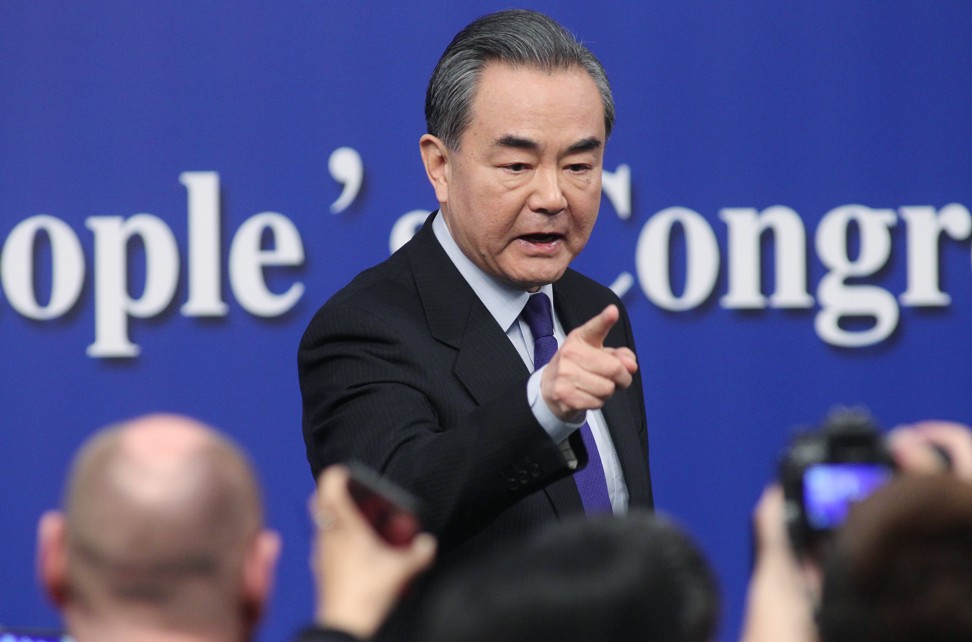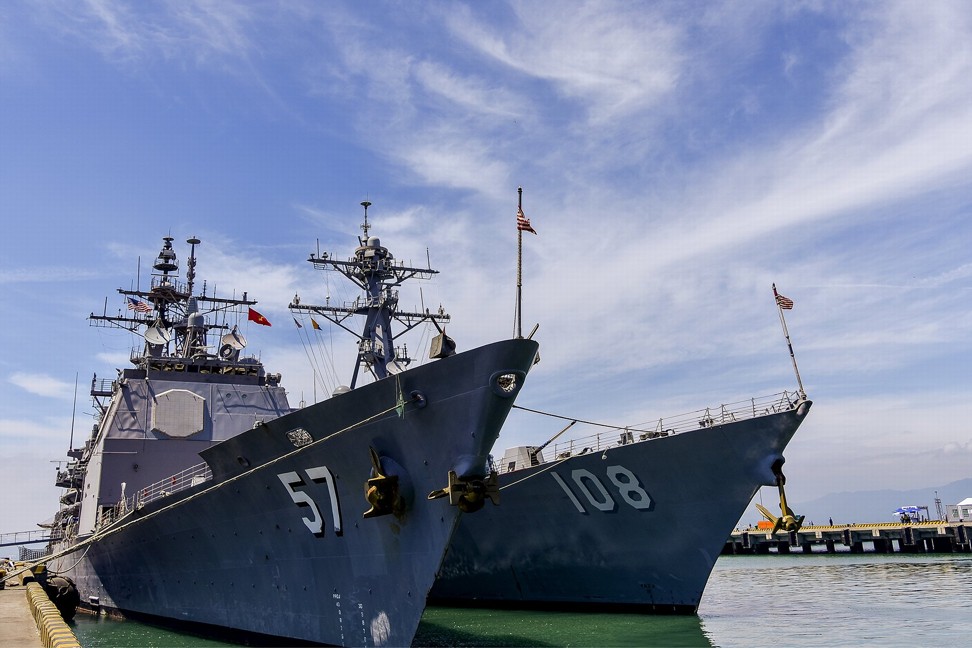
Beijing accuses ‘external powers’ of flexing muscles in South China Sea after US carrier docks in Vietnam
Arrival of ‘fully armed vessel’ in disputed waterway is ‘greatest disturbance to peace and stability’, Foreign Minister Wang Yi says
China’s foreign minister on Thursday took a veiled swipe at a US aircraft carrier’s highly symbolic visit to a Vietnamese port, saying “external powers” were showing off their military muscle and creating a great disturbance in the South China Sea region.
Speaking at a press conference in Beijing on the sidelines of the National People’s Congress – the annual session of the country’s ceremonial parliament – Wang Yi said also that China and the Association of Southeast Asian Nations planned to hold at least three rounds of talks on a code of conduct for handling disputes in the South China Sea, though he avoided answering a question on whether such a code would be legally binding.
The USS Carl Vinson arrived in Da Nang, Vietnam, on Monday, becoming the first aircraft carrier to dock in the country since the end of the Vietnam war in 1975. The visit was seen by some as a warning to Beijing over its military build-up in the region.
“Now the major challenge is that there are certain external powers who are unwilling to accept the stability in the South China Sea and always want to stir up trouble,” Wang said.
“Sending a fully armed vessel and aircraft to show off its military powers in the South China Sea has become the greatest disturbance to the peace and stability in the South China Sea.”
The US aircraft carrier was accompanied on the port call by the guided missile cruiser USS Lake Champlain and destroyer USS Wayne E. Meyer. The three ships had a combined crew of about 6,500 sailors and Marines.
Meanwhile, a recent report by the Centre for Strategic and International Studies, a US think tank, said China has completed the construction of a large communications/sensor array on Fiery Cross Reef in the Spratly Islands, which could be used for intelligence gathering.
Beijing claims almost all of the South China Sea, through which about US$5 trillion worth of goods passes every year. And despite a landmark ruling in 2016 by the Permanent Court of Arbitration in The Hague that said there was no legal basis for China’s maritime claims, it has pressed ahead with island building in the disputed waterway.
The Philippine Inquirer newspaper reported last month that China has almost finished transforming seven reefs in the Spratly Islands into military bastions, with ports, air strips, lighthouses, hangars and multistorey buildings.
Despite the concerns over its rapid militarisation in the region, Wang said China remained steadfast in its commitment to maintaining peace and stability.
“The basis of our handling of South China Sea issues is that … we are responsible for the Chinese people, we are responsible for the historical facts, we are responsible for peace in the region, and we are responsible for the international rule of law,” he said.
China has been Asean’s biggest trading partner for the past nine years, with the value of bilateral trade reaching US$500 billion last year, Wang said.
China would continue to build on its relations with Asean, with the focus on increasing cooperation on political and security issues, economics and trade, cultural exchanges, and the Mekong River, he said.



